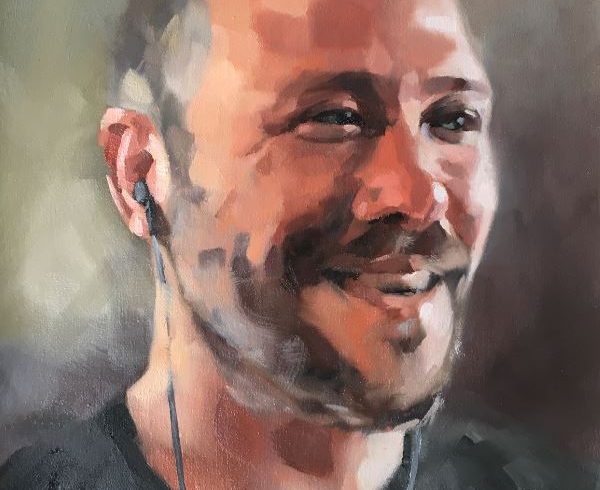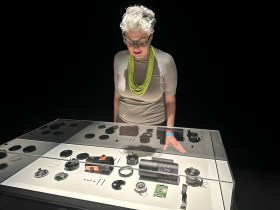The Basil Sellers Art Prize continues to reinvent itself with an ambitious lens on the future. For its last edition it moved its tight regional focus beyond its South Coast home, to invite artists from NSW and the ACT to apply.
Just two years on, the acquisitive prize is going national; and has increased the major prize winnings to $25,000.
While Basil Sellers is perhaps better known for his sporting prize, this prize comes out of his passion for collecting and commitment to perpetual growth in the understanding of and engagement in art. The first one was held in 2004, making this year the 10th edition.
Indira Carmichael, Coordinator Creative Arts Development Eurobodalla Shire Council – responsible for delivering the Prize – told ArtsHub: ‘It feels like the art prize has found its maturity.
‘What makes someone apply for an art prize outside their state? The money factor, the prestige factor, but now we also have the regional factor.’ Carmichael continued: ‘If COVID taught us anything, it was that the regions are gaining their importance, and their prominence, and it’s nice to tap into that zeitgeist and grow it.’
Certainly since the fires and COVID, there has been an exodus into the regions as a whole. It’s not just a real estate boom – it’s a regional arts boom.
Indira Carmichael, Prize Coordinator
Since opening in 2019, the new gallery has had over 40,000 visitors. ‘We had 9 months of being open in our new space, and then the fires hit us, and then COVID, so it has been a strange couple of years for everyone, but it is a beloved space and very well supported.’
She added: ‘Basil is a really special person; he has been collecting all his life and is in his 80s now – there is something about that life-long passion and sharing it.’
Why the Basil Sellers Art Prize is a good bet
‘Art prizes have almost become their own industry today, and have been really wonderful devices for people to get their art seen beyond their usual sphere,’ Carmichael said.
The Basil Sellers Art Prize was an open category prize in the past. This year it has been refined to only accept entries from painting, drawing and unique state printmaking.
Carmichael explained: ‘Basil lives in his house with all those winning works. So he felt if he was going national with the prize then he wanted to narrow it down to a more traditional focus. Works that he is comfortable living with.
‘He is a traditional gentleman, and it represents his commitment to the arts and his ongoing philanthropic support of artists. It pushes the idea of classical excellence but there is still plenty of room for contemporary making in that,’ she added.
Carmichael said that while we might hold perceptions around those terms ‘classic’ and ‘traditional’, she feels that they are far from limiting.
‘We don’t want to discourage anyone. But context is important when any artist makes an artwork; we just ask that they consider it within the lens of the prize’s brief.
‘As an art prize from a regional area, we know that there are great practitioners all over Australia so we want to encourage artists to enter no matter where they come from, big cities to small country towns alike.’
Tips and need to know
Carmichael’s advice on entering were simple:
- Don’t leave it to the last minute
- Be sure the work you are entering connects with that traditional and classic idea
- If you are unsure, then give us a call
- The finalist selection is made from photographs, so put in a good quality photo that shows the entire work
- Remember you can enter as often as you like, but only one work can be hung as a finalist
‘The interesting thing about art prizes, is that you are not necessarily presenting a body of work, but working towards a really tightly conceived and presented work,’ Carmichael concluded.
Entries to the 2022 Basil Sellers Art Prize open Monday 16 May 2022 and close Friday 29 July.
The 2022 Basil Sellers Art Prize finalists exhibition will be held at the Bas (Basil Sellers Exhibition Centre) opening Friday 7 October; exhibition runs 8 October – 20 November.
The Basil Sellers Art Prize is a biennial acquisitive prize celebrating and awarding artistic excellence and creative practice and offers a prize pool of over $30,000. To apply.






